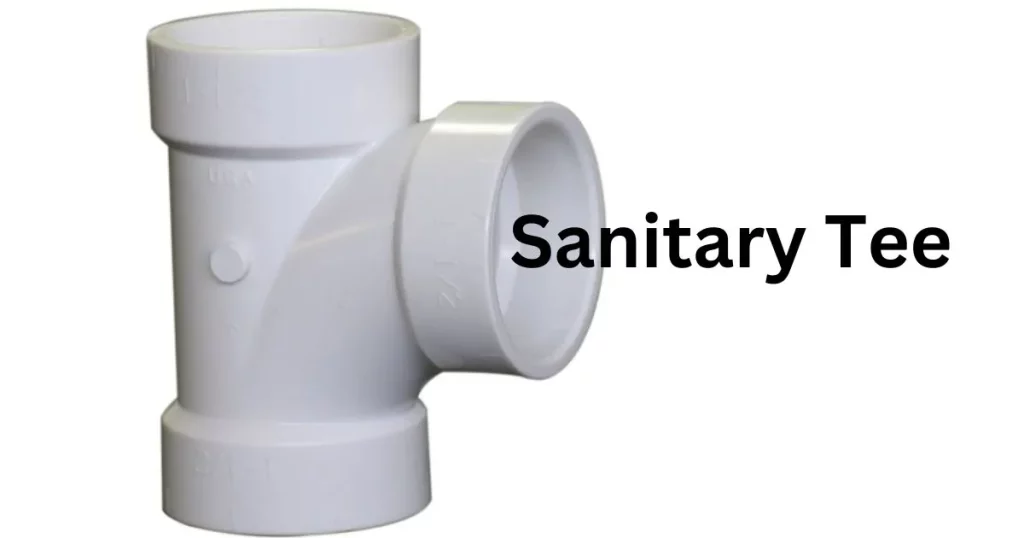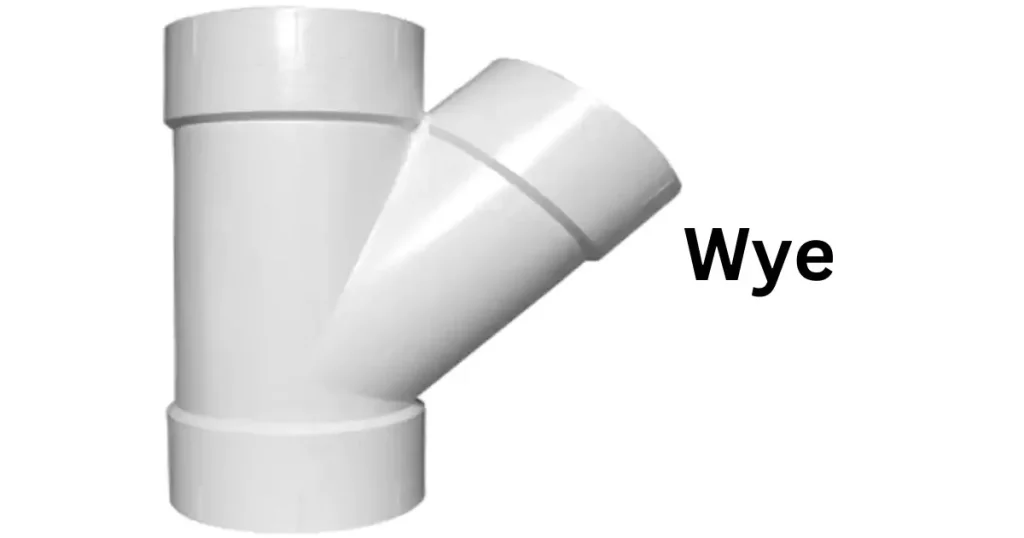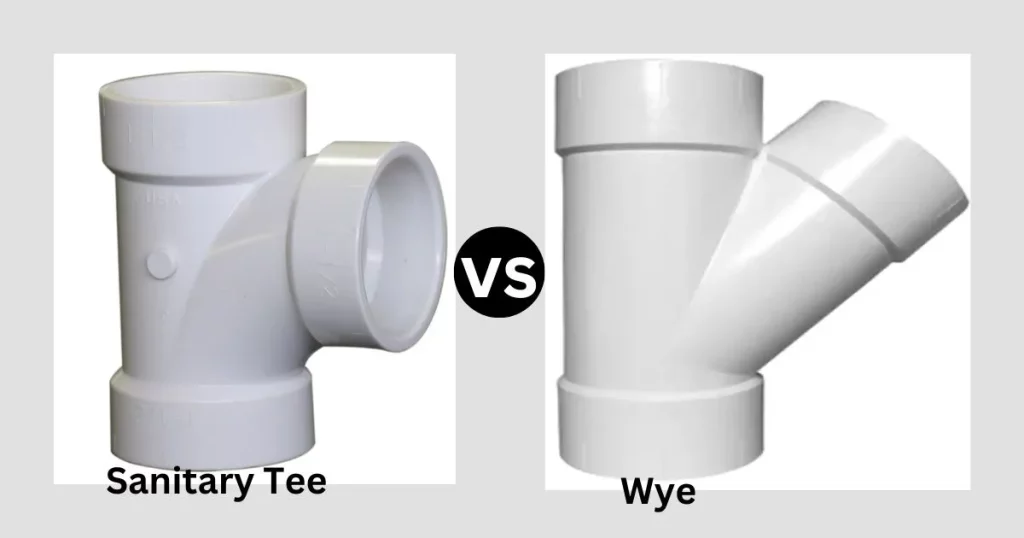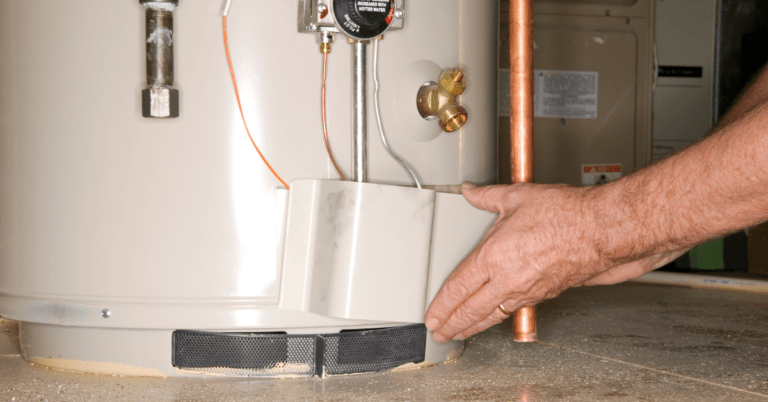Sanitary Tee vs Wye: Which Plumbing Fitting Should You Choose?
A sanitary tee or a wye? The choice between these two has left many DIYers stuck, especially when you want to make a modification or repairs. At times, it has also been an issue for some plumbers.
Sanitary tee vs Wye – which one do you use? If you need to connect to a vertical soil or waste stack, use a sanitary tee. Just be sure to position it squarely facing up to avoid turbulence. Save the wye fittings for floor drain connections or where codes specifically allow their use to divert flow between lines.
Installing the right fitting for the job will help ensure your drainage system functions properly for many years. Continue reading for an in-depth comparison between a Sanitary Tee and a Wye.
A Table of Sanitary Tee vs Wye
The table below gives an overview and summary of Sanitary Tee vs Wye Fitting
| Sanitary Tee | Wye Fitting | |
| Intended Use | Connect horizontal drainage pipe to vertical soil/waste stack. | Connect the inlet pipe to two outlet pipes at an angle, usually 45 degrees. |
| Orientation | Vertical outlet at 90 degrees to the horizontal inlet. | Two angled outlets, usually 45 degrees or 22.5 degrees. |
| Pipe Connection points | One horizontal inlet, one vertical outlet. | One inlet, two outlets at an angle. |
| Flow Direction | Straight down vertical outlet. | Can divert flow between two angled outlets. |
| Fitting Angles | Precise 90 degrees. | 45 degrees or 22.5 degrees, depending on type. |
| Common Materials | Cast iron, PVC, ABS, copper. | Same as above. |
| Typical Installations | Required for connecting to soil/waste stacks. | Floor drains, where codes permit use. |
| Building Code Compliance | Required fitting for vertical stack connections. | Limited applications by some plumbing codes. |
Sanitary Tee: Definition and Uses

A sanitary tee is a type of plumbing fitting used in drain-waste-vent systems. It is an important component that allows a smooth transition of waste flow in the plumbing system.
A sanitary tee connects a horizontal drain line to a vertical drain or vent line. It has a curved branch that creates a gradual transition for the flow of waste, preventing blockages. The interior surfaces are also smoothly finished to discourage the accumulation of debris.
When installing DWV systems, the plumber would use a sanitary tee in several applications:
- Connecting a horizontal run, such as a waste arm, to a vent stack or vertical riser.
- Connecting fixture drains, branch drains, and vent pipes into the main sewer drain line.
There are also certain configurations and applications where using a sanitary tee is prohibited according to plumbing codes. In some situations, it is not recommended to
- Connect a vertical drain to a horizontal drain.
- Use in closed loop systems, at low points of drainage systems, or in tight spaces with limited room.
- Use double sanitary tee patterns to receive discharge from back-to-back fixtures or pumps.
- Install with the branch opening facing upward or to the side vertically.
What makes a tee “sanitary”?
A sanitary tee has some key features that suit drain/waste applications. It has a curved center section rather than a straight 90-degree junction. This allows for smoother, more efficient liquid flow compared to a standard tee fitting.
The curve helps prevent solid waste from getting caught or building up at the junction between the horizontal and vertical pipes. It reduces the likelihood of blockages forming.
A sanitary tee also typically has a slight slope or angle (around 87-89 degrees) between the branch and vertical sections rather than a direct 90-degree turn. This further promotes drainage and discourages the settling of solids at the connection point.
Wye: Definition and Uses

A wye fitting is a pipe fitting shaped like the letter “Y”. It has one inlet that subdivides into two outlets at an angle, usually 45 degrees to the run of the pipe.
Wye fittings are commonly used to merge the flow from two pipes into one main pipe. They play a crucial role in systems designed to split flows. Wye fittings are also used to attach a vertical drainpipe to a horizontal one, reducing the deposition of entrained solids at the junction.
Wye fittings should be used when a branch connection is needed in a plumbing system, such as when adding a new fixture or appliance. Specific times to use a wye fitting include:
- When connecting a fixture drain or branch line to a horizontal drain line
- When connecting fixture drains or branch lines on multiple levels or floors to a vertical drain stack.
Wye fittings are sometimes prohibited to ensure proper drainage and venting in the plumbing system. Situations where wye fittings should not be used include:
- When used as a cross, this configuration can cause drainage issues
- If they have reduced-size openings, this would restrict drainage flow
- Unless connected to a common gas vent (according to the NYC plumbing code.)
Plumbers must carefully consider drainage layout and flow and consult all applicable plumbing codes to determine if and how wye fittings can correctly be installed for their specific job. Proper fitting selection helps ensure effective drainage.
Sanitary Tee Vs Wye: Key Differences
As seen above, these types of fittings have distinct purposes for different applications. Proper fitting selection depends on factors like pipe orientation and flow requirements. Let’s explore the key differences between sanitary tee fittings versus wye fittings.
Intended Application
A sanitary tee fitting connects a horizontal drainage pipe to a vertical soil or waste stack. It allows for wastes to flow straight down the vertical pipe without sharp turns that could cause clogging.
A wye fitting is intended to connect two pipes at angular positions to allow flow diversion. It is commonly used to connect a vertical floor drain to horizontal branch lines that receive fixture waste connections from adjacent fixtures on that floor level.
Orientation Or Positioning
A sanitary tee fitting orients the vertical outlet at a right angle (90 degrees) to the horizontal inlet. This allows waste to flow straight down the vertical pipe without turbulence from a sharp turn.
A wye fitting orients the vertical and horizontal outlets at angular positions, usually 45 degrees or 22.5 degrees, depending on the wye type. This allows waste flowing into the fitting to divert its flow direction into the two outlets.
Pipe Connections
A sanitary tee fitting has one horizontal inlet and one vertical outlet. It connects a horizontal drainage pipe to a vertical soil or waste stack.
A wye fitting has two outlets oriented at an angle to each other, usually 45 degrees or 22.5 degrees, depending on the type of wye. It connects the inlet pipe to the two outlet pipes.
Flow Direction
In a sanitary tee, waste flows straight into the vertical outlet without sharp turns, flowing down the soil or waste stack.
In a wye fitting, waste flowing into the inlet can divert its flow into either of the two angled outlet pipes. This allows a vertical floor drain to distribute waste between two horizontal branch lines serving adjacent fixtures.
Fitting Angles
A sanitary tee fitting orients the vertical outlet at a precise 90-degree angle to the horizontal inlet.
A wye fitting provides two angled outlets, usually at 45 degrees or less commonly at 22.5 degrees, depending on the type of wye. 45-degree wyes are more common as they provide closer to equal flow splitting between the outlets.
Installation Considerations
Proper slope and orientation are important for sanitary tees to ensure waste flows directly into the vertical outlet. Wyes require careful placement to split flow equally between outlets.
Fittings must be solidly connected to pipes without fractures or leaks. Caulked or no-hub joints commonly join cast iron or PVC/ABS fittings to pipes. Soldered or compression joints for copper.
Fittings should be securely fastened or supported, particularly when joining vertically overhead pipe sections.
Sanitary Tee Vs Wye: Which One Is The Best?

If you need to connect a horizontal drainage pipe to a vertical soil or waste stack, a sanitary tee is generally your best choice. The 90-degree orientation allows waste to flow directly down the stack without turbulence or drag from a sharp turn. This minimizes the risk of clogging or drain backups over time.
You’ll want to use a sanitary tee any time the building codes specifically require tying into a soil stack. Most jurisdictions only permit tees for this application and prohibit wyes from being used. Following the code is important for ensuring proper sanitary drainage and preventing health issues down the line.
Additionally, sanitary tees tend to have fewer installation concerns than wyes. With a tee, the orientation doesn’t matter as much, so it’s less likely to be improperly installed at an angle that impedes flow. Improper installation of a wye could cause one side to receive little flow.







